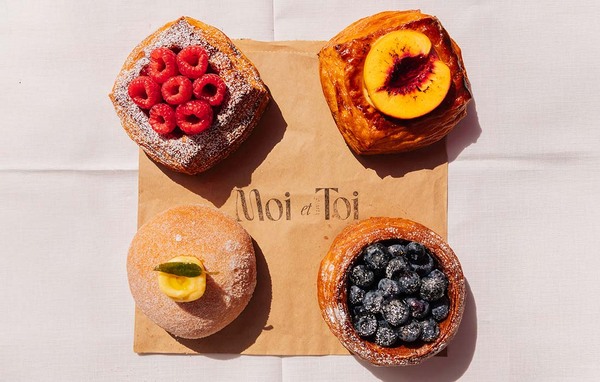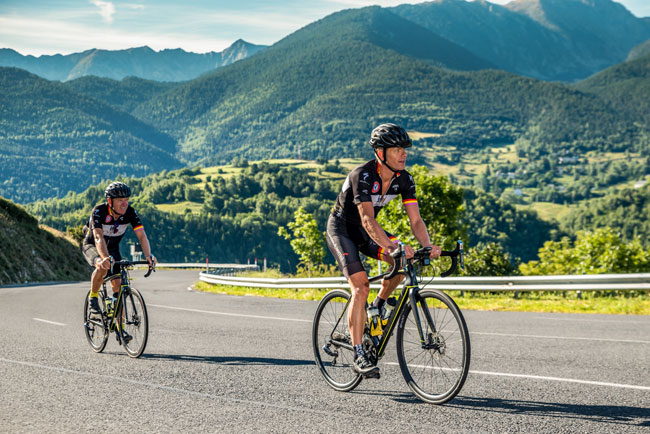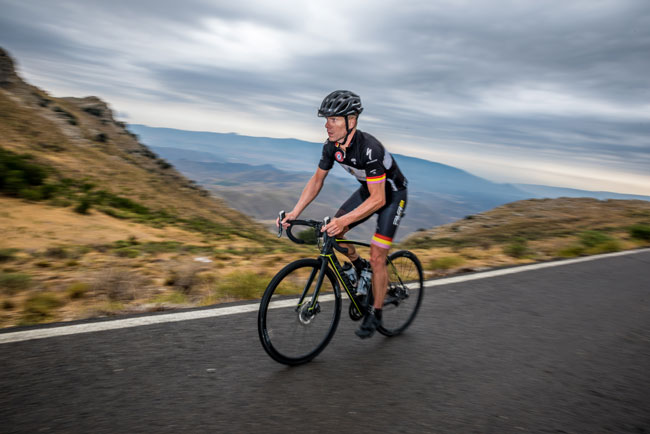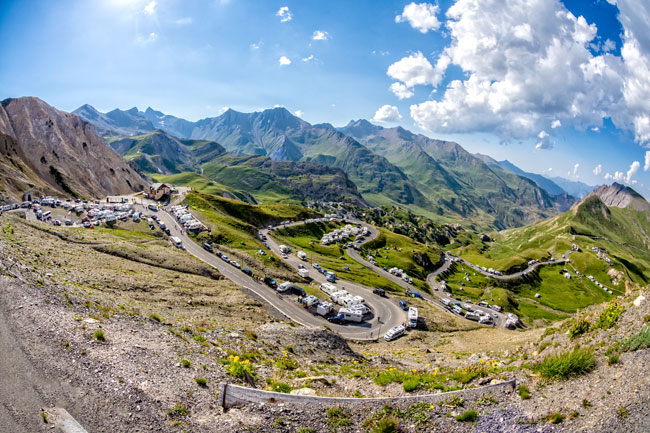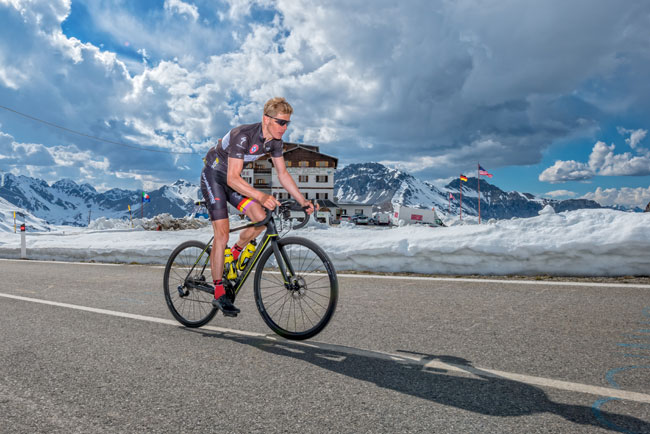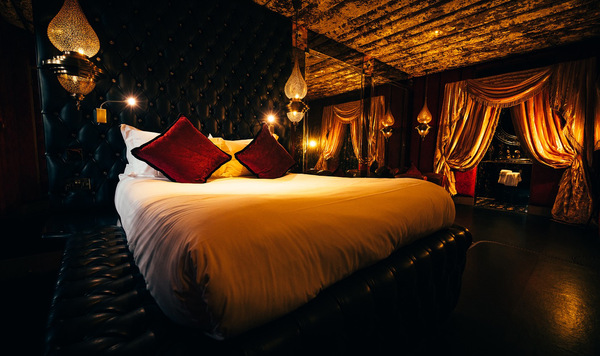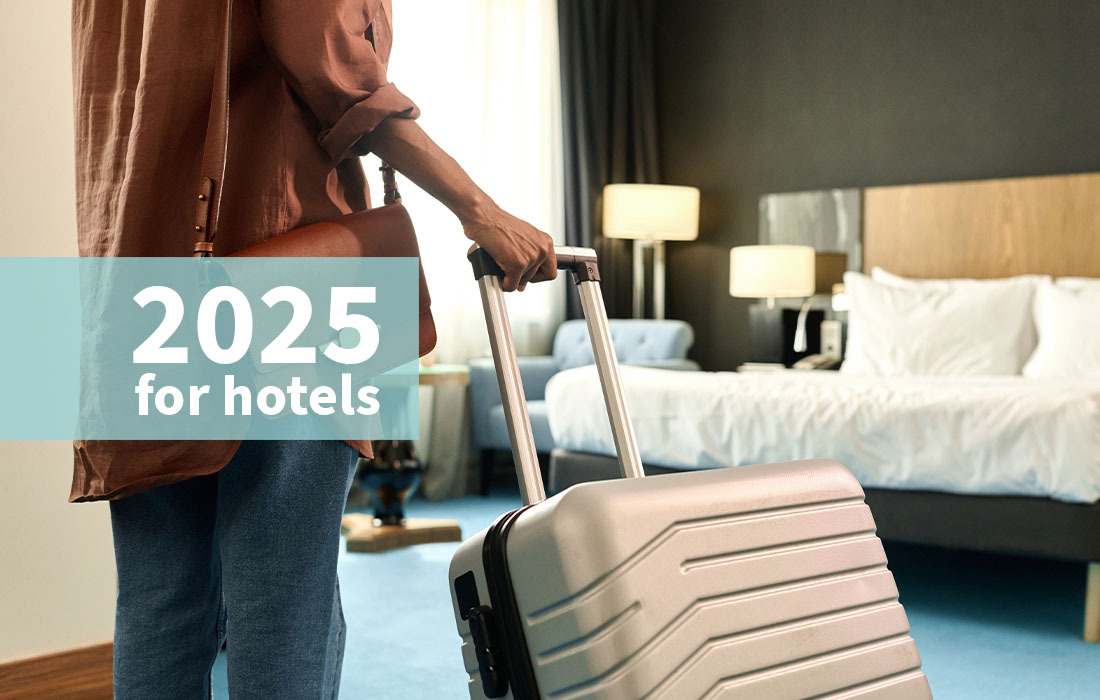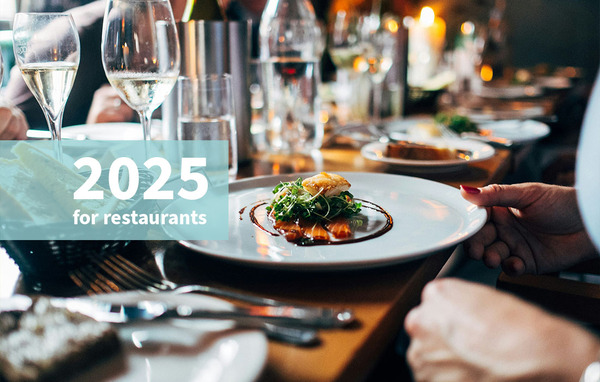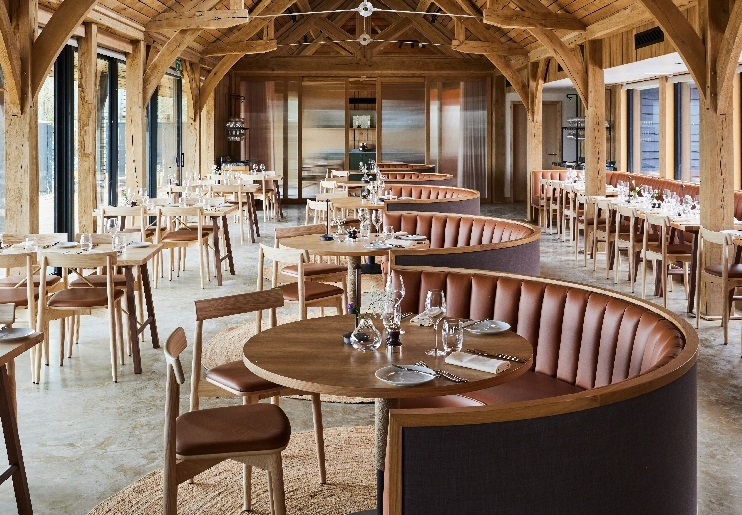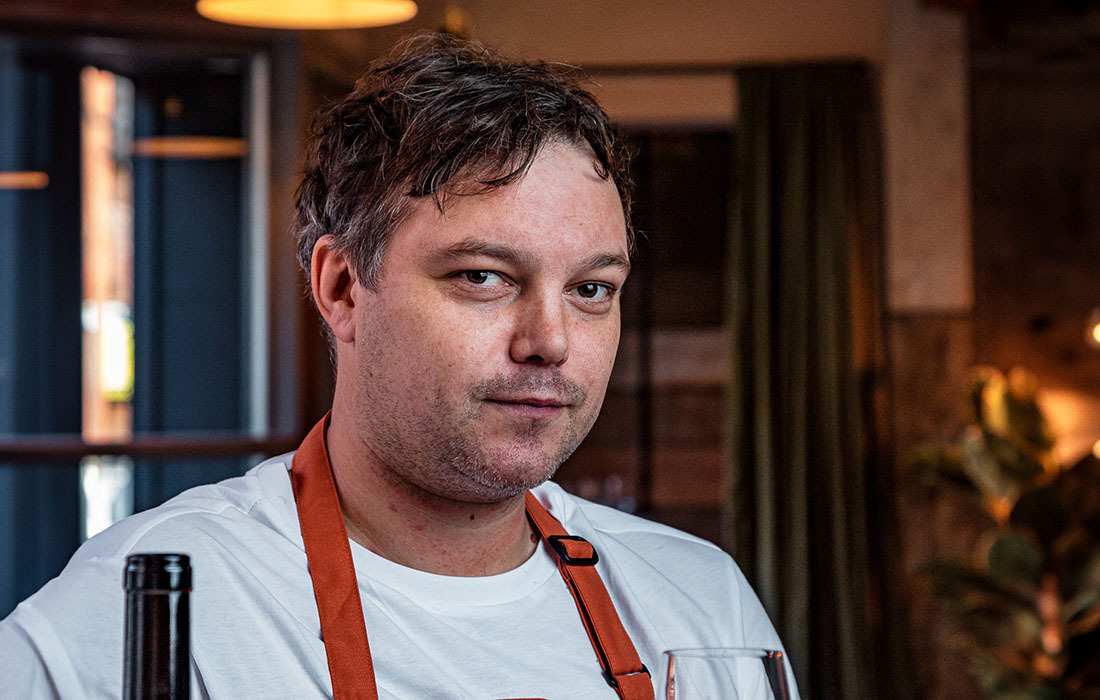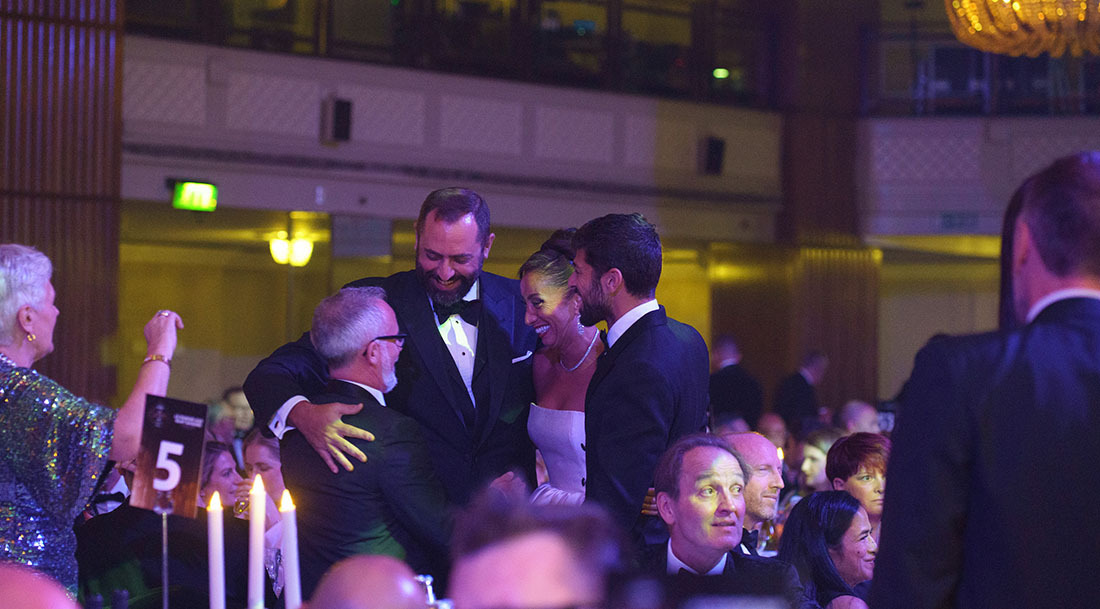Hayden Groves on his Three Tours Challenge
This year, chef Hayden Groves joined a team of four tackling all three of cycling's Grand Tours, starting and finishing each of the 63 stages the day before the racing professionals took them on. He tells *Neil Gerrard*the equivalent of cycling from London to Singapore â" and the charity cookbook that has emerged from it
Throughout the course of 2017, in addition to his day job as executive chef of BaxterStorey, Hayden Groves joined ex-England footballer Geoff Thomas as part of a four-strong team to take on a huge challenge for charity: riding all three of professional cyclingâs Grand Tours â" the Giro dâItalia, the Tour de France and the Vuelta a España.
With a total distance of 10,473km, the three tours presented a mammoth challenge. It is one that only 32 professional cyclists have ever completed in a single year.
Riding a day ahead of each professional stage race, Groves and the rest of the team â" which included entrepreneur Doug McKinnon and wealth manager James Maltin â" completed the challenge on 9 September, the day before the end of the final stage in the Vuelta, the last in the 2017 Grand Tour series.
Together, the team have already raised over £300,000 for charity. There are two big fundraising dinners still to come this year, as well as the proceeds of a charity cookbook written by Groves and published by Anthony Hodgson at Face. All of the money raised will go towards Cure Leukaemiaâs appeal fund to build a new haematology centre at Queen Elizabeth Hospital, Birmingham.
The Dolomites stage in the Giro. There wasnât a flat kilometre of road in a stage that saw five climbs. The scenery was absolutely stunning, with three mountains well over 2,000m high.
What was your toughest day and why?
Believe it or not, it wasnât one of the signature tough days on paper, but a stage in the last week of the Vuelta. We had mostly been riding in hot 40°C temperatures in the south, and after all that riding Iâd got myself pretty lean. When the race
moved 800km up north to Asturias, we had a day where it was 11°C and heavy rain; it took me all of six minutes to be soaking wet and shivering, and for hours that was how it remained: grim. Without my kit bag (courtesy of the airline), I didnât have any of my warmer kit available, so was borrowing bits left, right and centre, even stuffing a thick brown-paper bread bag down my jersey front for some extra insulation.
Did everyone make it or did anyone have to abandon at any point?
Geoff crashed on stage three of the Tour de France route. It didnât look too bad at first, but a week later he got a hip infection. It was a real tough day â" the âqueenâ stage [the one deemed the hardest in the race], with 4,600m of climbing and three hors catégorie climbs [so tough theyâre off the classification scale] in the Jura â" and he had to get off. It was a rest day the following day, so effectively he had one and a half days off to try and recover with some antibiotics. He struggled on and rode the next two days, but the infection robbed him of any power and he had to abandon in the morning of another tough day in the Pyrenees. It was emotional for all to see him leave.
Riding the three Grand Toursâ 10,473km route, including 133,000m of ascent, across seven countries is gruelling. No wonder only 32 pros have ever completed all three events in the same year.
Itâs also even tougher by the time you get to the third, the Vuelta, and the airline has lost your kit bag, forcing you to wash your one pair of (borrowed) team shorts and jersey in the bath after each stage, and praying theyâll be dry in the morning.
As a team we all have different strengths â" as in a kitchen. Iâm a lifelong cyclist, so I always wanted to push on. I would be happy to sit at the front and take the wind for the team, but this challenge wasnât about Strava records or the like. It was a charity ride, and success wasnât about your personal overall placing on the Galibier, although I was allowed to go off and test myself on a few occasions and we would regroup at the top. It was about getting everyone to the finish of each stage and each tour, and ultimately to Madrid, while raising substantial funds for Cure Leukaemia.
What were the three toughest climbs for you?
In no particular order, as follows. The Mont du Chat. Itâs an average of 10.3% for 8.7km.
The Alto de lâAngliru in Spain. Itâs 12.5km at 10.2%, but the truth is the first 6km is about 7%, so you can imagine what the last half is like. There are pitches of 23.4% in the final 3km. Itâs a real gurn-fest.
For the final one, itâs a tossup here between the Stelvio Pass in Italy and the Galibier in the Tour, but Iâd have to say the mighty Stelvio at 2,740m â" but only because we had to climb it from both sides after another legendary mountain, the Mortirolo Pass.
Stage 12 of the Giro, from Forlì to Reggio Emilia. It was 229km, or 142 miles â" either way, it was a long day out on the bike.
What else happened along the way that sticks in the memory?
We had a tweet from the race leader [and eventual winner of both the Tour de France and the Vuelta this year] Chris Froome supporting us.
It was a real morale boost to everyone, riders and crew. Lance Armstrong, who joined the four of us in 2015 for two stages, mentioned in his Tour podcast that we were a âbunch of lunatics for taking on all threeâ. Iâm sure he was only being complimentary.
I was on the cycling podcast at the beginning of the Vuelta, and spoke about the challenge and the cookbook. It was great to share our story as the podcast has a reach of 2.5 million.
A lot of the interest was in the food, and people tweeted asking when and where they can pre-order Back in the Saddle, the charity cookbook Iâve been writing to document the whole experience. At the finish there was a prerecorded video with some messages of congratulation, including one from BBC sports editor Dan Roan, which was so cool.
Roughly how many calories did you consume per day, and what were some of the typical dishes that saw you through?
Depending on whether it was a flat stage or mountains, it would be 6,000-8,500 calories for me, but it varies for each rider. Thatâs one of the real challenges: taking on enough fuel, and absorbing and processing it, day in, day out.
Iâm proud to be an ambassador for top sports nutrition brand Science in Sport, so the team got access to the same products as Team Sky, which made a huge difference, especially with recovery products off the bike.
I also had to do some regional dish homework for the charity cookbook, so I pressganged the guys to have the seafood fregola in Sardinia, paella in Valencia, a big pot of cassoulet in Foix, and fabada Asturiana after a day in the rain. Bob, one of the mechanics, was a particular fan of all things new and tasty. All these dishes appear reworked in the cookbook, photographed by Adrian Franklin, along with some awe-inspiring shots from the three tours by Dave Hayward.
You canât run the pass or cook the fish when descending at over 100km an hour, so my job from April was the charity book. BaxterStorey very kindly gave me the time to take a sabbatical, and has fully supported the book project.
We have contributions from Chris Froome, Michel Roux Jnr, Phil Liggett, Laura Kenny, Charlie Craddock (the cancer doctor who founded Cure Leukaemia, and who Geoff says saved his life after heâd been given three months to live following a leukaemia diagnosis), and our chairman Alastair Storey.
Out at the end of November, the limited print run of 3,500 will see 2,500 copies gifted by BaxterStorey to the charity, with all sales proceeds going to Cure Leukaemia. Itâs a pretty unique proposition â" itâs like the buyer making a £30 charity donation and receiving a 288-page coffee table book back as a thank you.
Without the foresight of the business and in particular Noel Mahony and Alastair Storey it wouldnât have happened, so a huge thanks once again from me and all at the charity.


